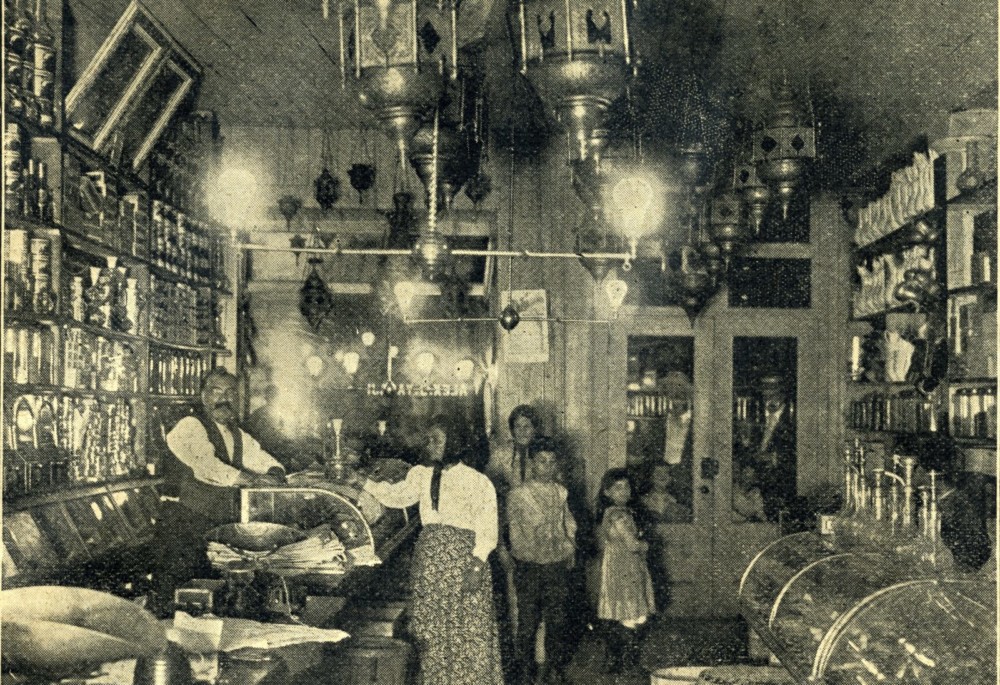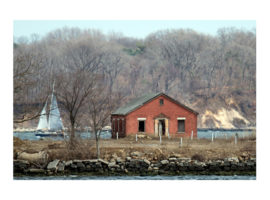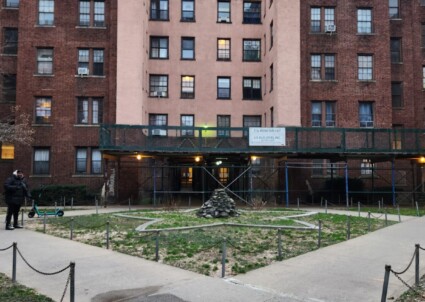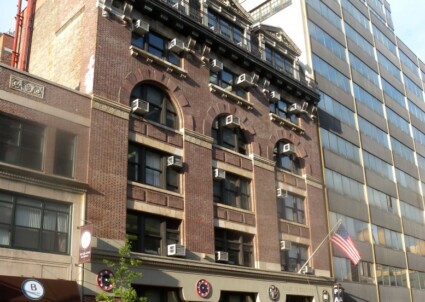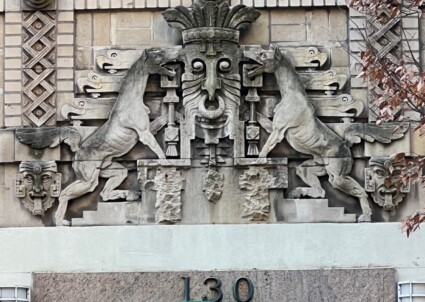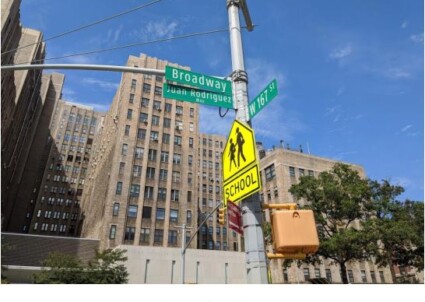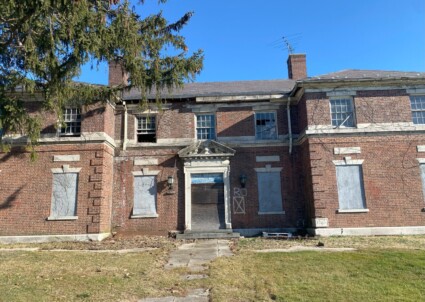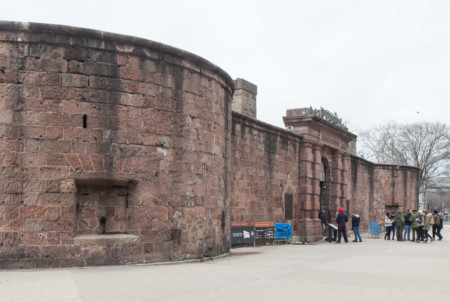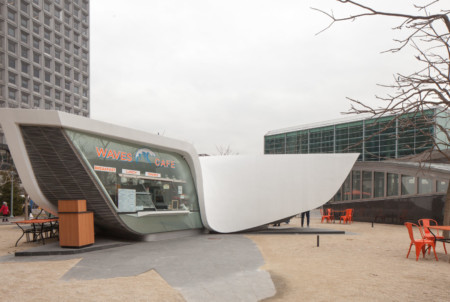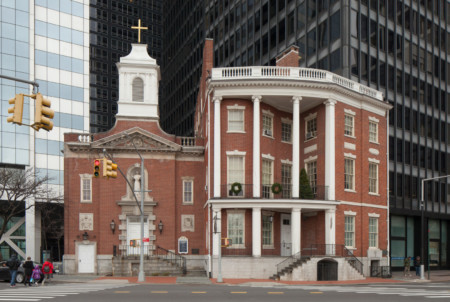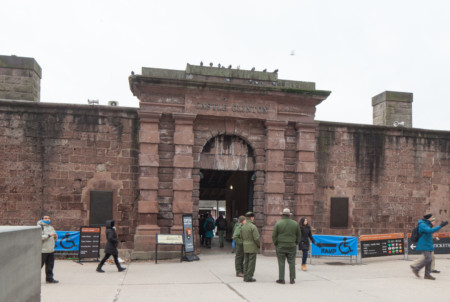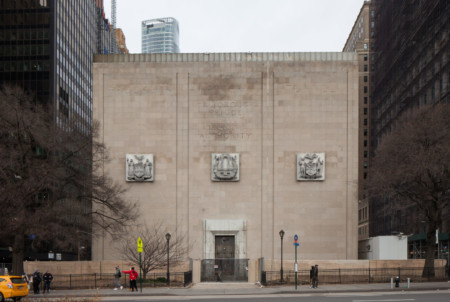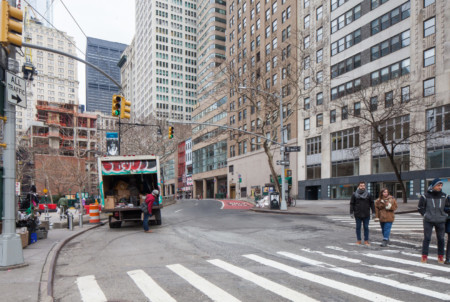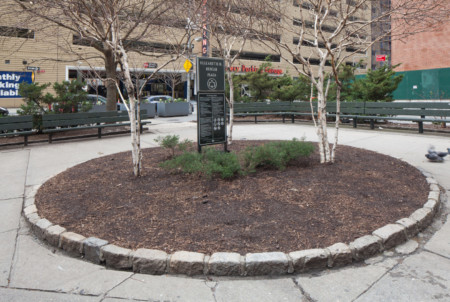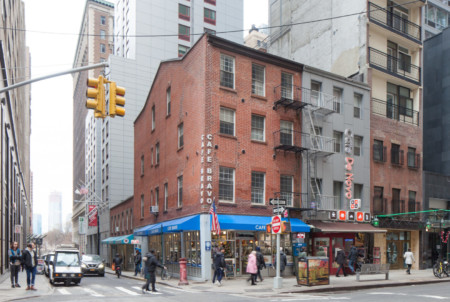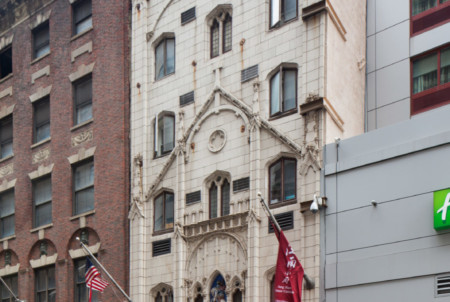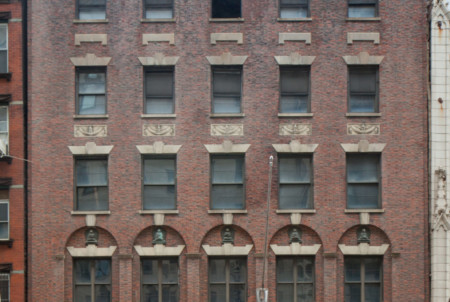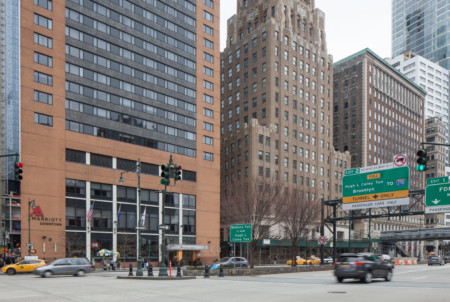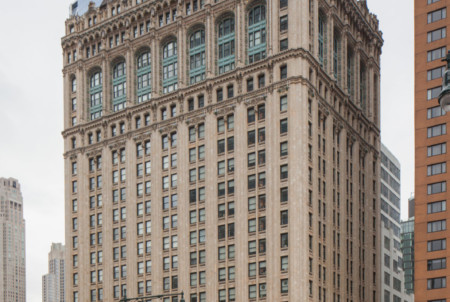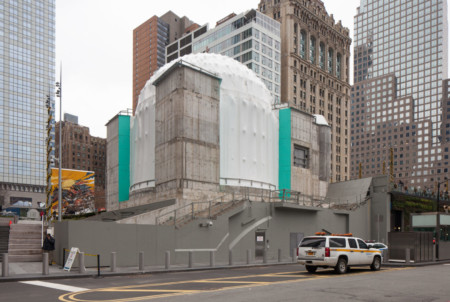Lower West Side, Manhattan
Much of the Lower West Side was once underwater, with the Hudson River shoreline running approximately where Greenwich Street is now located. During the colonial period, the settlement at Manhattan’s southern tip was guarded by Fort Amsterdam (renamed Fort George by the British), and later reinforced by the Whitehall Battery. Partially destroyed during the American Revolution, the fort was demolished and the Battery rebuilt as an elegant promenade. The adjacent blocks remained the city’s most elegant residential neighborhood, as evidenced by several surviving Federal-style row houses in the neighborhood. In the lead-up to the War of 1812, the U.S. Government built a new fortification—the West Battery, later renamed Castle Clinton—on an artificial island 300 feet offshore.
By the mid-19th century, fashionable New Yorkers had moved northward and lower Manhattan was given over to commercial activity and tenement housing. Landfill extended the island’s western shoreline, enveloping Castle Clinton, by then repurposed as an immigration station. Horsecar tracks plowed through the neighborhood’s north- south thoroughfares and in 1867 the first elevated train in the country began operating along Greenwich Street. Single-family row houses were split up into multiple units, and purpose-built tenements were erected to cater to the neighborhood’s increasingly diverse immigrant population.
One of the Lower West Side’s most notable immigrant communities was “Little Syria”, which existed along lower Washington Street and the surrounding blocks from the 1880s through the 1920s. The “Great Migration” of Syrians to the U.S. was sparked, in part, by the opening of the Suez Canal in 1869 and the subsequent devastation of the local silk industry. Though government officials often referred to them as “Turks” due to their citizenship within the Ottoman Empire, the community generally identified as Syrian. The majority came from the Mount Lebanon area, and many embraced their Lebanese heritage in the 1920s with the rise of that country’s national independence movement. Most of Little Syria was Christian; approximately half were Syrian Melkite and Lebanese Maronite Catholics.
Manhattan’s Syrian Quarter was central to the lives of other Syrian communities throughout the U.S., both economically and culturally. Its merchants imported—and its factories produced—wares including Oriental rugs, cigarettes and mirrors. Printers modified their machinery to reproduce Arabic characters, and more than 50 Arabic newspapers and periodicals were produced at its height.
The Lower West Side’s Syrian community began to decline in numbers and visibility during the 1920s, the same period in which the neighborhood was experiencing profound changes to its built environment. The Immigration Act of 1924 halted new arrivals to sustain the neighborhood, and residents either moved or Syrian quarters or assimilated into the general population. Rising property values also played a part as the commercial development of the Financial District increased during the Roaring Twenties. By the 1930s much of the neighborhood’s low-scale row houses and tenements had been replaced by Art Deco skyscrapers. Today the neighborhood has largely vanished, although several significant sites remain nestled among the office towers of Lower Manhattan.
